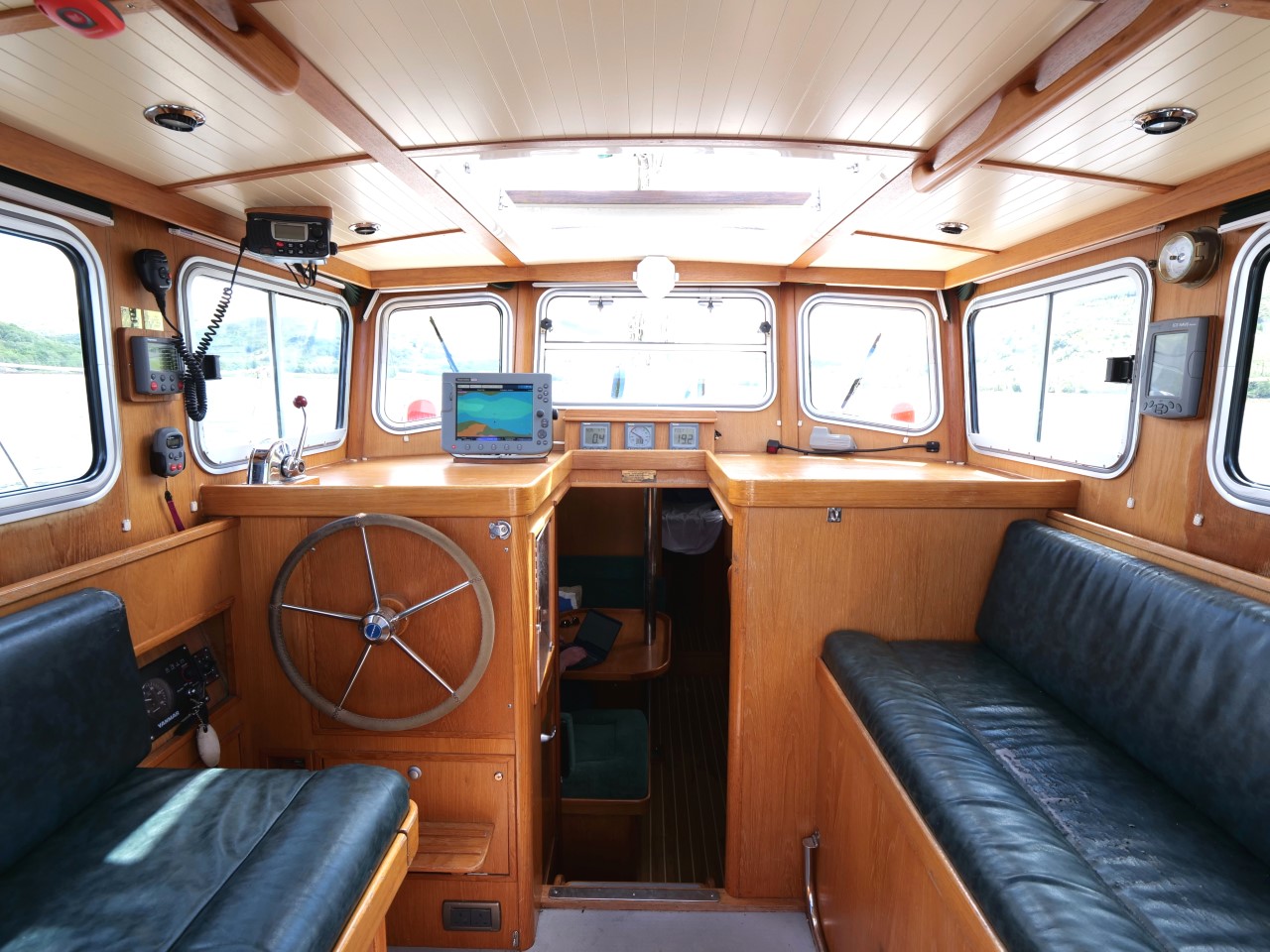Camasonian
Veteran Member
Hello everyone:
I'm helping my brother with a top-to-bottom restoration of a Fisher 34 motorsailor. He is basically ripping everything out and doing a top to bottom restoration including all new wiring and electronics.
He's asking me for advice on which combo chartplotter/sonar/radar electronics package to go with on a moderate budget. The boat is in SE Alaska and will primarily be used as a liveaboard and cruiser in SE Alaska and the inside passage. I'm a little out of date as to what are the current preferred electronics packages for an older boat like this. He will probably be putting in all new gauges and controls, not just the nav electronics.
For a sense of what we are talking about, this is what the wheelhouse in a Fisher 34 looks like in terms of space

What would you guys recommend in terms of a new multifunction electronics package for a boat like this? I'm figuring something more or less in the ballpark of the Raytheon Axiom+ 9" multifunction plotter or something similar from one of the other brands.
What would you guys put on a boat like this?
I'm helping my brother with a top-to-bottom restoration of a Fisher 34 motorsailor. He is basically ripping everything out and doing a top to bottom restoration including all new wiring and electronics.
He's asking me for advice on which combo chartplotter/sonar/radar electronics package to go with on a moderate budget. The boat is in SE Alaska and will primarily be used as a liveaboard and cruiser in SE Alaska and the inside passage. I'm a little out of date as to what are the current preferred electronics packages for an older boat like this. He will probably be putting in all new gauges and controls, not just the nav electronics.
For a sense of what we are talking about, this is what the wheelhouse in a Fisher 34 looks like in terms of space

What would you guys recommend in terms of a new multifunction electronics package for a boat like this? I'm figuring something more or less in the ballpark of the Raytheon Axiom+ 9" multifunction plotter or something similar from one of the other brands.
What would you guys put on a boat like this?
